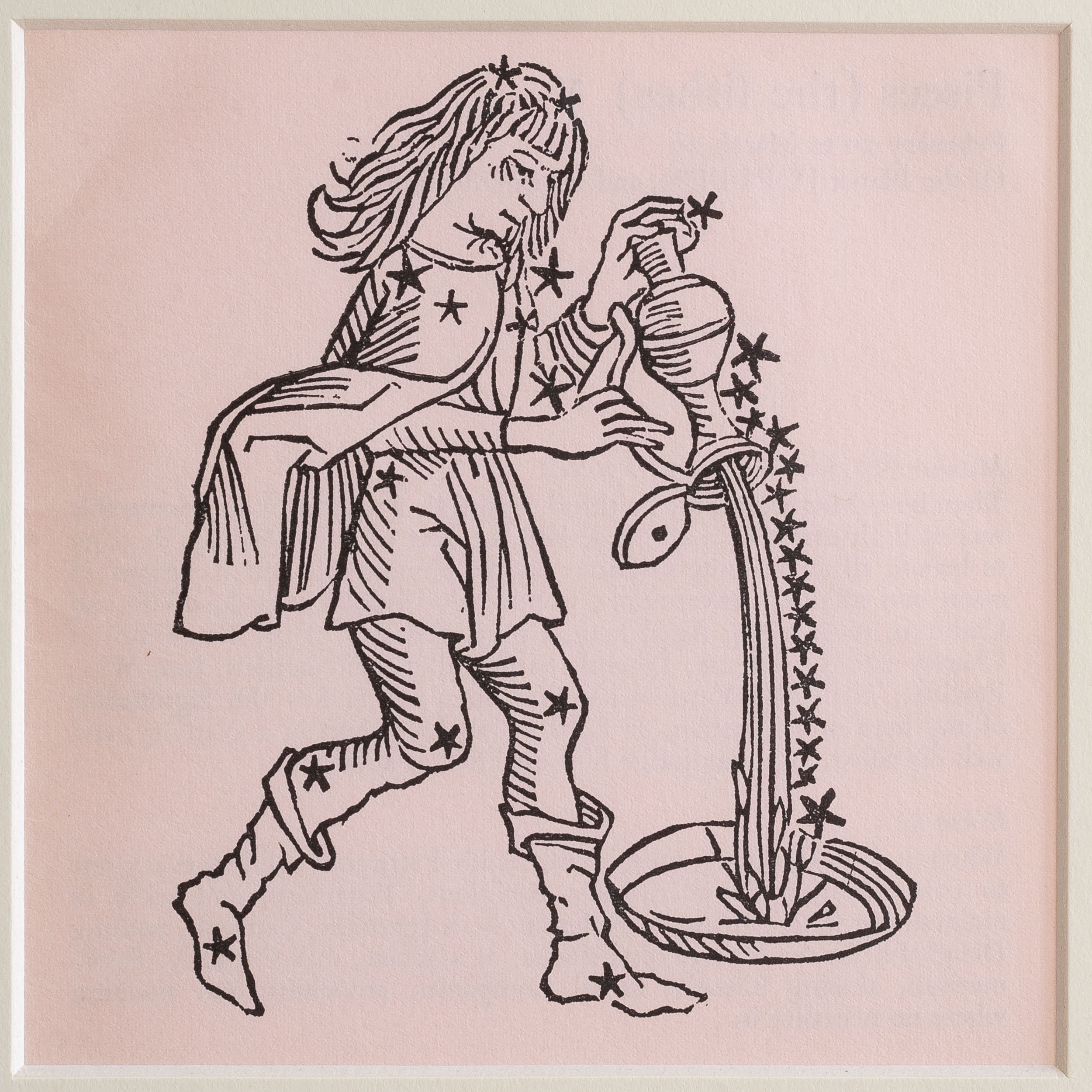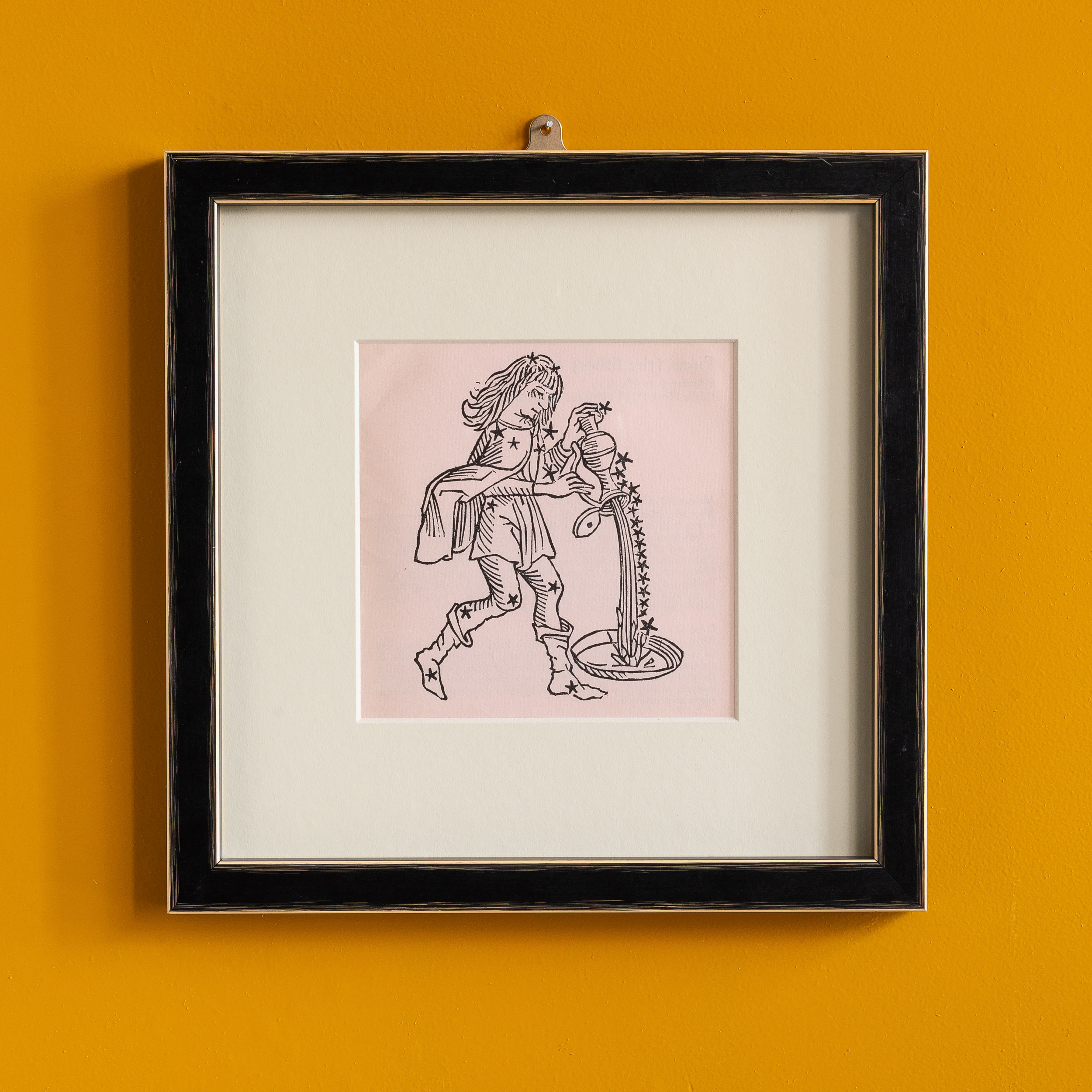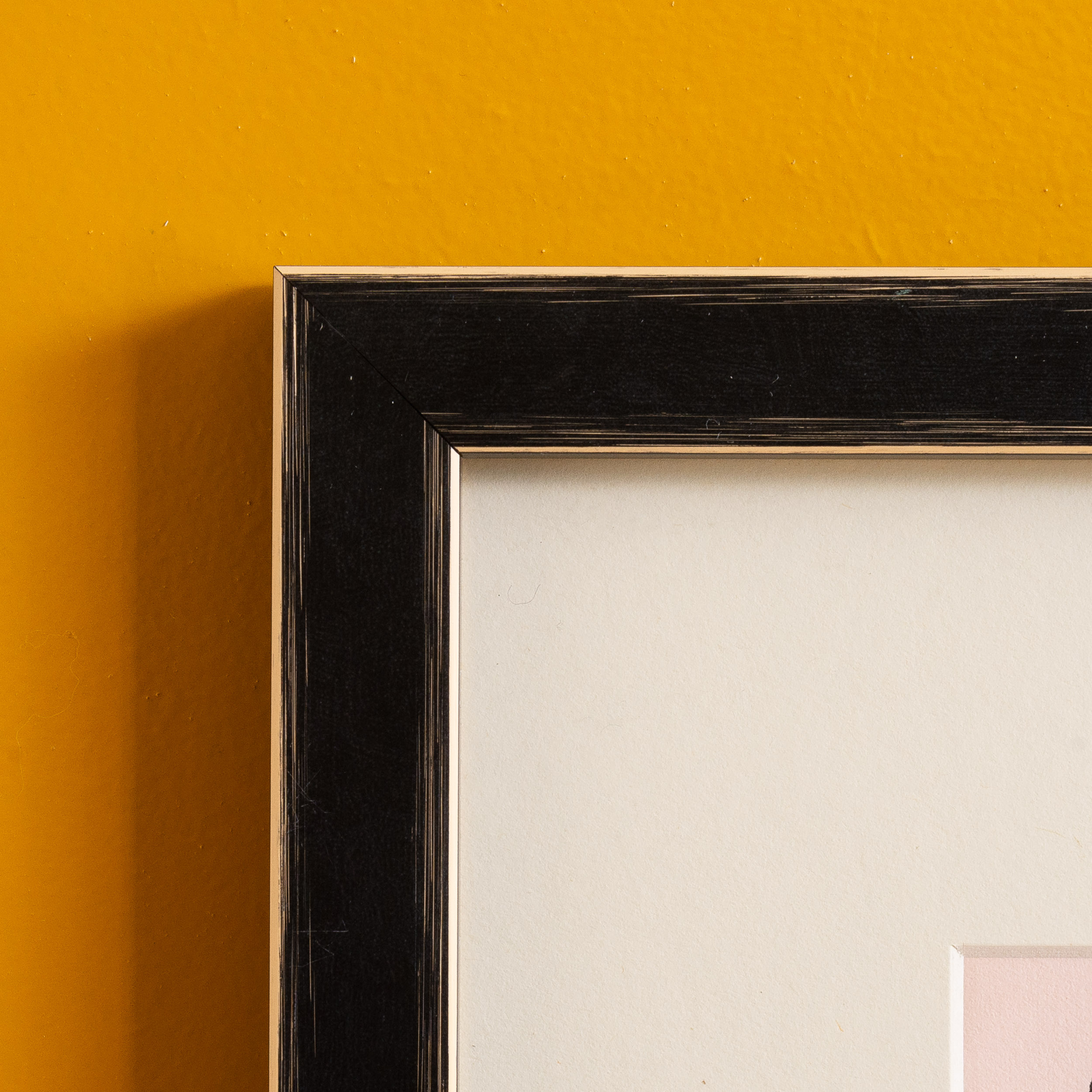Poeticon Astronomicon e De Magnis Copiunctionibus – Aquarius,
Reproductions published in 1964 based on 15th century illustrations.
Poeticon Astronomicon was originally published in Venice, 1485 whilst e De Magnis Copiunctionibus was published in Augsburg 1489. The descriptions come from William Lilly of London in 1647.
£195 each
In stock
Lithographs printed by Eyre and Spottiswoode at Grosvenor Press in 1964. Presented in cream mounts and framed in black.



